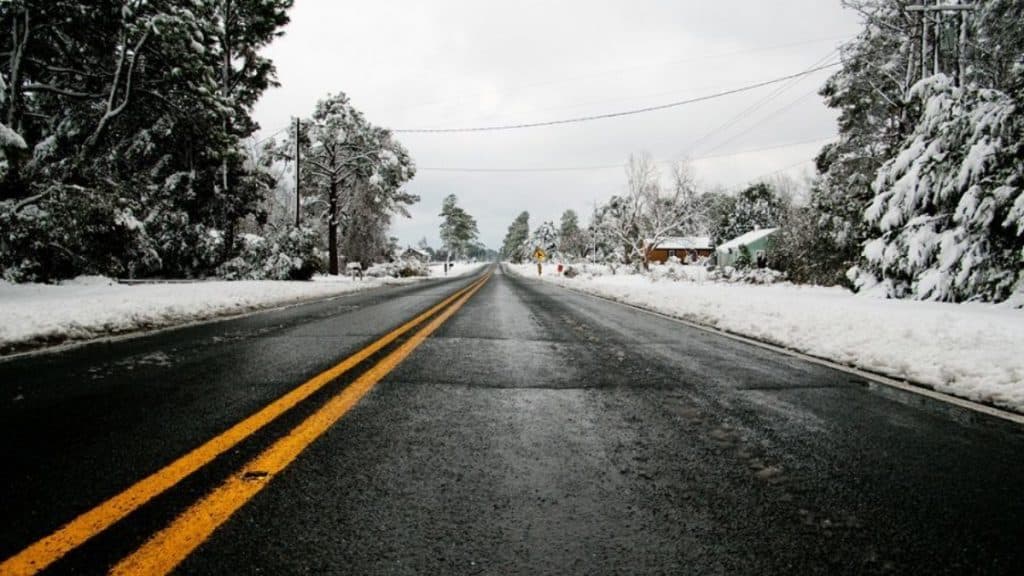We rely on our roads to take us to our destinations, but ultimately, they provide the means for our journey itself. Weather can cause havoc, especially when snow and ice arrive.
Are you dealing with winter effects and uncertain about what to use to clear your road? Homeowners and municipal services use some practical methods, both DIY and commercial, to quickly solve the problem. These methods are both proactive and reactive.
This is how to melt ice on roads.
Rock Salt
Salt is an effective ice melter, and rock salt is often used on roads. It lowers water’s freezing point, so ice melts even when cold. The chemical reaction is the separation of sodium and chloride. This disrupts the bond to dissolve ice and prevents it from sticking to the road itself.
While regular table salt can be used, rock salt is widely available for ice management. However, if used too much, it erodes the environment.
Sand
Sand is also used when there is ice on the roads, but sand doesn’t melt anything. It creates a layer on top, and as you drive on it, it increases traction while creating a grinding effect on the ice surface.
Once the ice melts on its own, you are left with a mess that needs to be washed away or cleaned up. This is a viable option to improve driving conditions, but it isn’t a product that melts ice directly.
Liquid De-icer
Ice management for roads is often beyond an individual’s purview as municipal crews handle them. They have several methods to combat ice, but one of the most effective is liquid de-icer.
This is commonly a compound of magnesium chloride or calcium chloride. It is hydroscopic, meaning it absorbs moisture. As it melts the ice, it disintegrates into a brine.
Liquid de-icer can be used either as a reactive method, applied after a snow and ice event and melts the top surface down to the asphalt or as a proactive method, which applies it to the road surface before it snows.
Ultimately, de-icer is a more natural product that isn’t corrosive or unsafe for the environment because of its organic properties. You can also get this product for home use if you need de-icing on your driveways or roads on your property.
Coffee Grounds
Do you brew your own coffee? Those leftover areas can actually help you on icy roads. These throwaway ingredients are high in nitrogen, which lowers the melting point of ice and, with its dark colour, absorbs more heat from the sun.
It is an excellent, organic alternative. However, you need to own a chain of coffee shops to produce enough grounds to melt ice on the road.
Vinegar
Vinegar is another DIY method of melting ice and a better alternative to rock salt. Its acetic acid lowers the ice melting point, although it isn’t as fast as salt.
However, you can mix it with boiling water for a double whammy on ice. It will rapidly melt even large sheets of ice on the road. A quick breakdown of ice into smaller shards lets you shovel it off the road or driveway and get back behind the wheel.
Kitty Litter
We use commercial kitty litter to soak up the contents of your cat litter boxes. However, it is also effective for ice removal on the road. Much like sand, it provides traction and grinding for driving on ice.
Since it has absorbent properties, it can also clump liquid as it melts from friction or raised temperatures. For a non-toxic alternative to chemicals, you can get large bags of the cheapest kitty litter and sprinkle it on your road or driveway.
Other DIY Alternatives
Several things in our homes work well on ice, even though they are unconventional. For example, pickle juice works like salt with its high sodium content. However, because the salt is dissolved in the brine, it won’t damage.
Sugar beet juice is a chemical makeup like rock salt and works effectively, although it stains the road or driveway. Also, rubbing alcohol or isopropyl alcohol is adequate for quick ice melt. Yet, it is expensive and usually housed in a small amount, so it won’t cover much ground.
This is how to melt ice on roads. With the variety of methods listed, you should be able to tackle your ice issue quickly.

